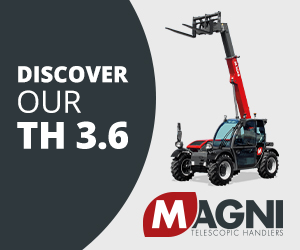Powered Access Standards Update from IPAF |Industry News
National standards shall be kept current and relevant by means of timely revision, reaffirmation, or action to stabilize. Standards developers are permitted three options – periodic maintenance, continuous maintenance or stabilized maintenance. Periodic maintenance is defined as the maintenance of a standard by review of the entire document and action to revise or reaffirm it on a schedule not to exceed five years from the date of its approval. Standards are required to be reviewed and updated every five years.
ANSI A92.3-2006, A92.5-2006 and A92.6-2006 have been reaffirmed in 2014 with the anticipation of new standards taking their place in the future. Reaffirming in effect is a statement that the standards are released with a new date (-2014R) unchanged from the prior publication.
New replacement standards in both the United States (ANSI/SAIA A92) and Canada (B354) are underway. In summary, all aerial work platforms with the noted exception of vehicle mounted will no longer have a product-specific standard and will all be covered by a design (A92.20/B354.7), safe-use (A92.22/B354.8) and training standard (A92.24/B354.9).
Sub-committees have been using ISO standards as the foundation of these new standards: ISO 16653 – Design, calculations, safety requirements and test methods, ISO 18893 – Safety principles, inspection, maintenance and ISO 18878 – Operator (driver) training for mobile elevating work platforms (MEWPs).
Each of the ISO standards is reviewed for adoption and if required change is significant, the standard is adapted for use. Both the US and Canada are likely going to adapt the standard based on the CSA drafts issued for public comment in June of this year.
Teams working on these standards are trying to keep pace with a moving target. With harmonized language across country standards as one of the goals, it is a challenge to keep pace with a moving target. When ANSI began their review several years ago, the ISO standards also began their review. As a result, they were trying to review a standard that was changing itself.
The US and Canada are reviewing and updating at the same time, so it is unlikely they will be completely harmonized in the end. Even if they could, each country always seems to have a different opinion on some issue that results in some difference.
As these are consensus standards, everyone will have the opportunity to review and comment on the proposed standard when it is issued for public comment. As stated earlier, the B354 aerial standards have been released. The A92 standards are anticipated to be issued mid-year in the US.
With thousands of man-hours invested in these reviews and more to come, it is hopeful to believe these standards will be issued by the end of Q1 2016. That may still be hopeful as the CSA B354 standards were initially scheduled for publication in Q1 2015.
There are two dates that you should look out for – when the standards will be issued for public comment and when they will be reviewed again. Look to have your voice heard and get the standards you want that will guide our industry. Look for communications from the SAIA (the ANSI secretariat) to identify when the A92 standards will be issued for public comment. IPAF will be monitoring and contributing to these developments, and updates will be at www.ipaf.org/news











